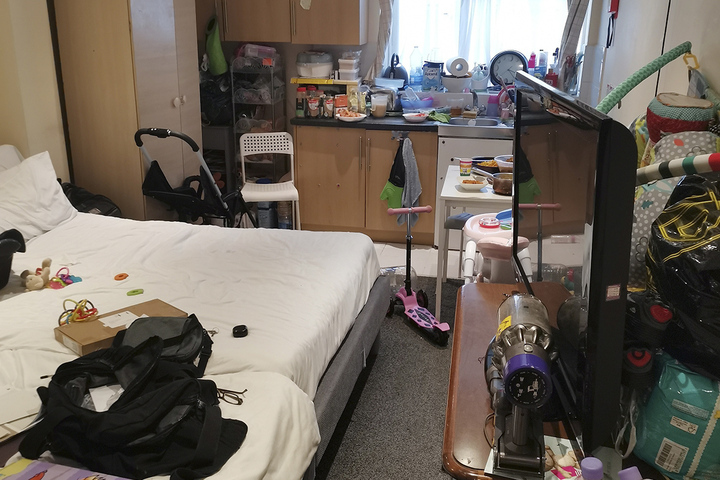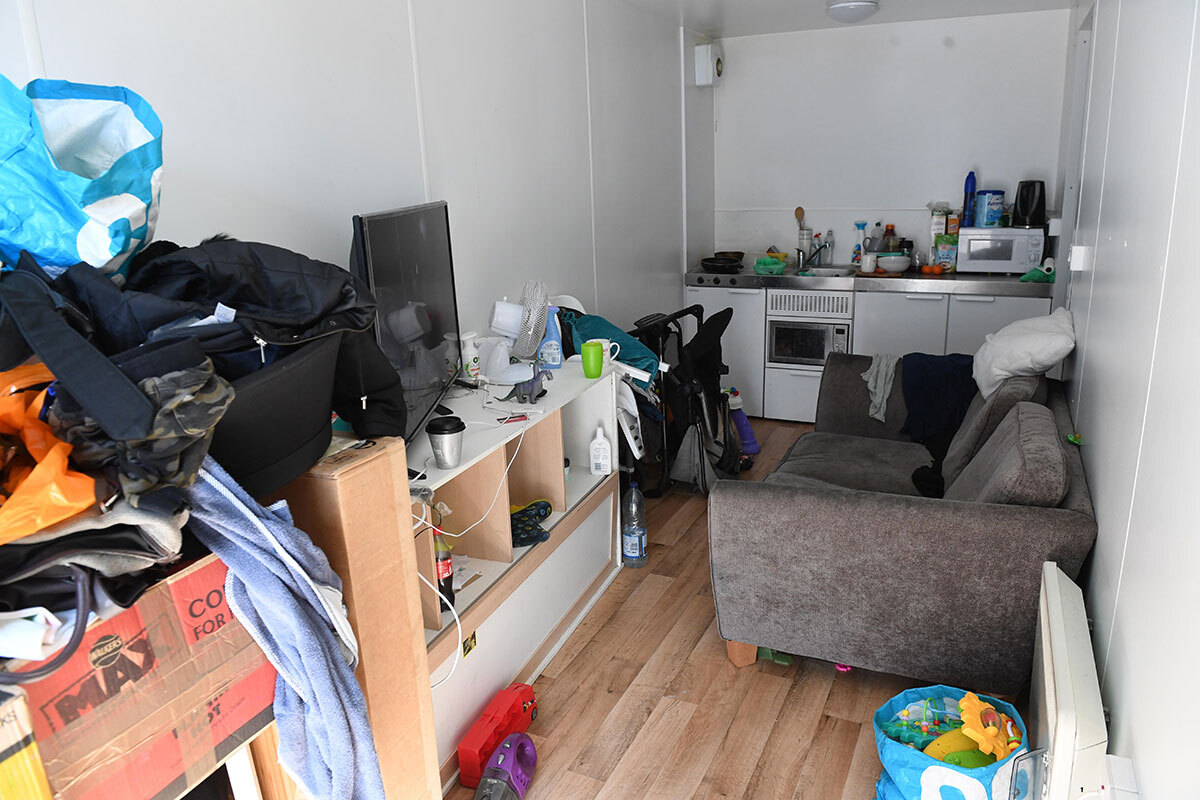You are viewing 1 of your 1 free articles
Temporary accommodation space guidance not suitable for young children, says report
Space guidance for temporary accommodation is “based on the Boer War” and inadequate for families with children, a report has found.

Research by architects Morris + Company, shared exclusively with Inside Housing, found that a lack of specific standards for emergency housing meant that “extremely poor accommodation is considered fit for purpose”, despite it “falling far below what a family requires to carry out daily life”.
“Only over the age of 10 are you considered a person that requires suitable space,” the report said.
The lack of guidance “contrasts greatly to the significant and continuous evolution” of standards for other types of housing, it added.
Local authorities commonly defer to guidance on houses in multiple occupation, which stated that substandard accommodation should be brought up to standard, but does not reference any specific enhancements for families with children.
The report quoted Paul Fitzgerald, principal environmental health officer for the London Borough of Sutton, who said: “These standards are based on the Boer War to prevent the transmission of disease, every piece of legislation has been rehashed in some way.”
Currently, the definition of temporary accommodation in planning policy encompasses everything from a one-night stay to a 10-year tenancy.
“I’m disturbed by that broadness because it means you cannot get to the crux of the problem,” said Miranda MacLaren, director at Morris + Company and author of the report.
Speaking to Inside Housing, Ms MacLaren proposed a new, more specific definition of ‘emergency accommodation’, to denote places where people are housed for 56 days while the local authority carries out a duty of care assessment.
Such emergency accommodation should be subject to a new set of design standards for families, the author said, such as private space and proximity to outdoor play areas and schools.
Example layouts showed a baby and mother needing around 25 sqm, while two adults with three children require 52 sqm.
Shared space for residents and staff should also be provided on-site, where residents can feel safe, “ask for assistance and share knowledge with their community”.
Ms MacLaren told Inside Housing that these standards – developed with Commonweal Housing, Common Projects and the Magpie Project, as well as input from London boroughs including Hackney, Camden and Tower Hamlets – could apply to both new build temporary accommodation and retrofit projects created from ‘stranded assets’, such as old office blocks.
“You should look at it with that transitory nature in mind,” she said. “To make these [sites] deliverable, achievable for local authorities, we need to look at them as a stepping stone into permanent accommodation.”
The report urged councils to highlight the need for new temporary accommodation in their local plans, to encourage development of purpose built stock.
“Housing associations need to move into this space in a much more proactive way,” Ms MacLaren added. “I don’t understand why there is so much money going to private landlords, rather than housing associations, seeing this as part of their duty and their need within their affordable housing provision.”
Figures published last month by the Department for Levelling Up, Housing and Communities (DLUHC) showed that English councils spent £1.74bn on temporary accommodation between April 2022 and March 2023.
Spending on temporary accommodation has risen 62% in the past five years. While £565m, a third of last year’s total bill, was spent on emergency B&Bs and hostels, which are considered to be the types of temporary accommodation with the poorest standards.
The authors of the research plan to deliver a set of new design guidance directly to local authorities’ planning and homelessness departments.
A DLUHC spokesperson said: “Councils must ensure temporary accommodation is suitable for families, who have a right to appeal if they think it does not meet their household’s needs. That’s why we have given councils £1bn over three years to help them tackle homelessness, targeted to areas where it is needed most.
“Government has been clear that the long-term use of B&B accommodation for families with children is inappropriate and unlawful and we are determined to stop this practice.
“Our Homelessness Advice and Support Team, drawn from local authorities and the homelessness sector, provide support to help local authorities to end the placement of families in B&B accommodation for more than six weeks.”
Cllr Darren Rodwell, housing spokesperson for the Local Government Association, said: “Councils want to create great places for current and future generations. This includes building homes that are accessible, spacious, eco-friendly, affordable to heat and easily adaptable with good transport links and access to community spaces.
“However, funding pressures and a shortage of social housing means the number of households living in temporary accommodation has risen by 89% over the past decade at a significant cost to councils.
“We are calling on the government to provide long-term funding certainty to councils so they can build 100,000 high-quality, climate-friendly social homes a year.”
Sign up for our homelessness bulletin
Already have an account? Click here to manage your newsletters











